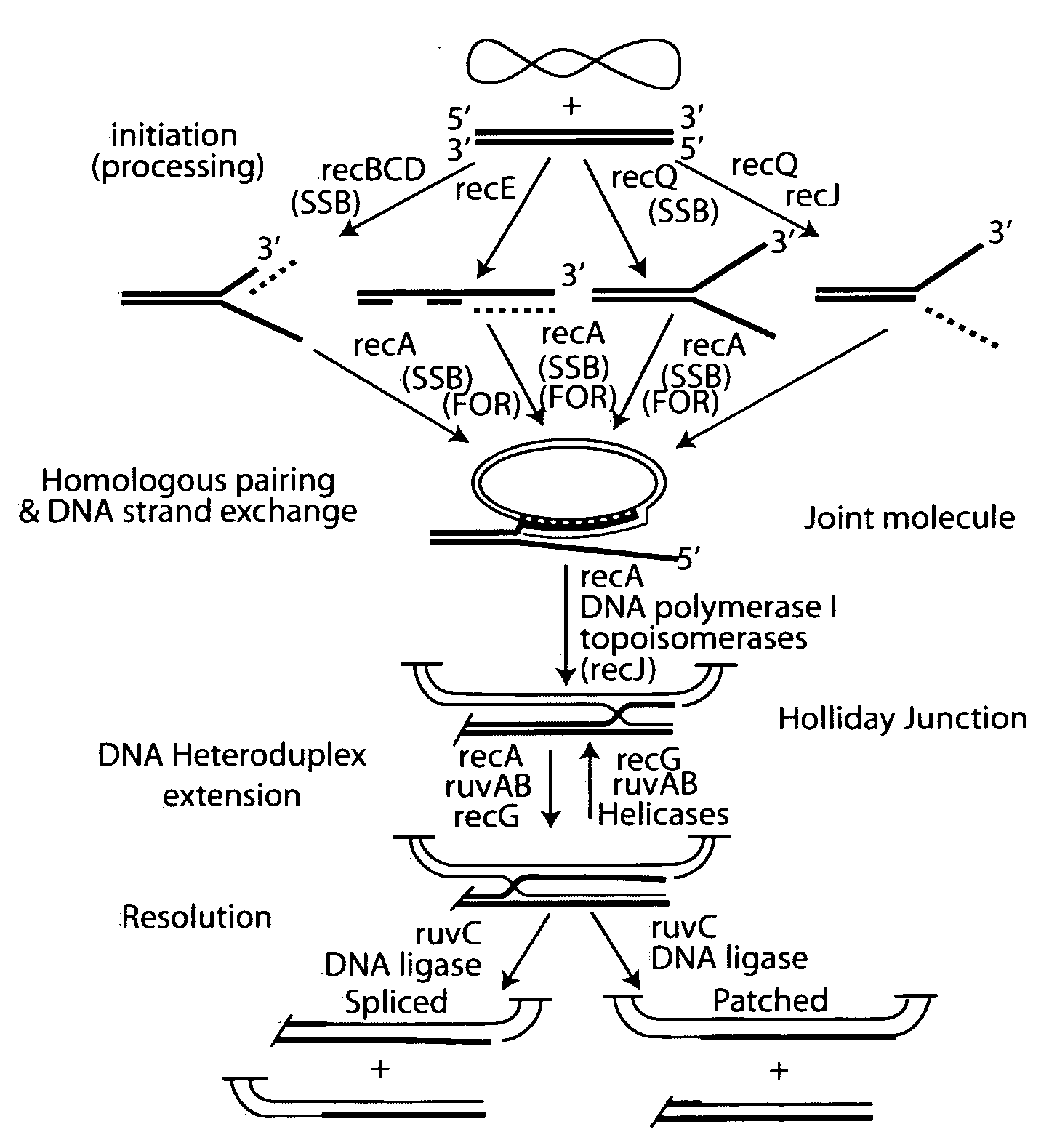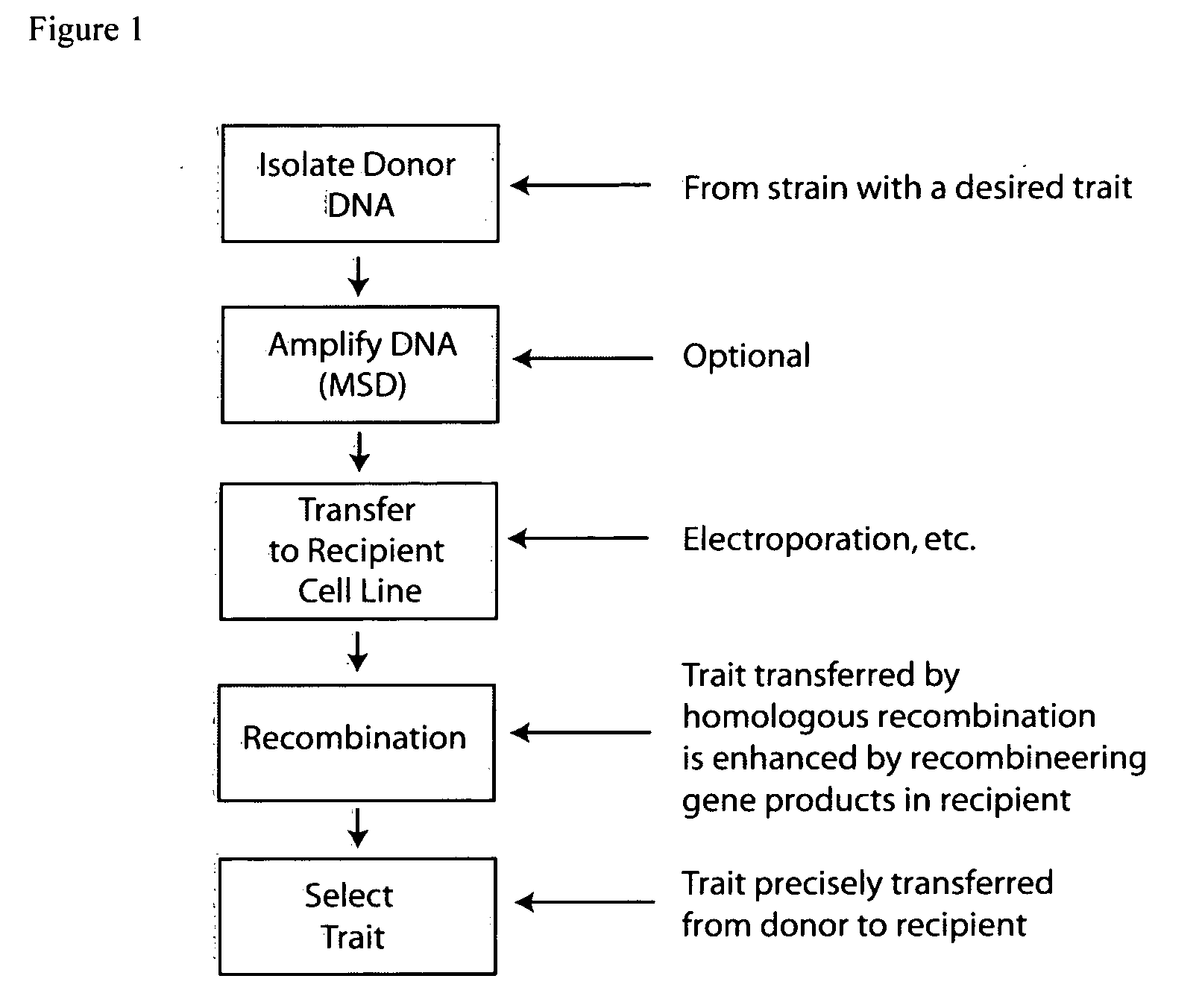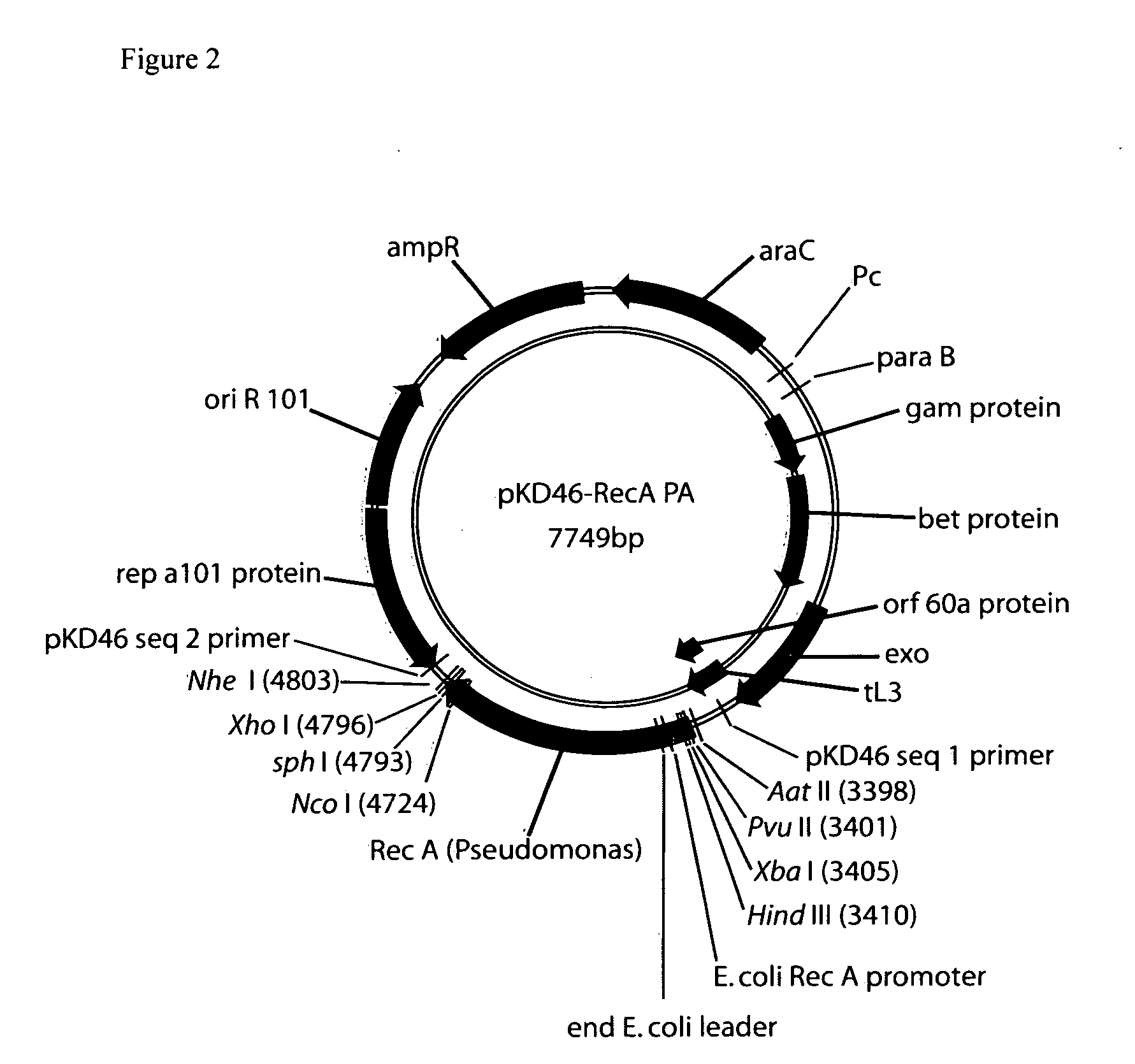Processes for improved strain engineering
a technology of strain engineering and process, applied in the field of engineering of bacterial or eukaryotic strains, can solve the problems of low efficiency, tedious and slow process, use of electroporation of genomics, etc., and achieve the effect of improving the efficiency of gene transfer and enhancing the efficiency of electroporation efficiency
- Summary
- Abstract
- Description
- Claims
- Application Information
AI Technical Summary
Benefits of technology
Problems solved by technology
Method used
Image
Examples
example 1
[0044]Recombineering in E. coli is often based on either the phage Red or the RecET recombination functions. The λ genes involved in Red recombination are exo, bet, and gam (herein referred to as “red gam”). The exo gene product has 5′ to 3′ exonuclease activity, and the bet gene product is a single-strand DNA binding protein that promotes annealing. The gam gene product inhibits the RecBCD nuclease preventing linear DNA (i.e. PCR product) degradation. The red+gam+pKD46 plasmid (FIG. 2) was originally developed for recombineering and contains arabinose inducible exo, bet, and gam and orf60a genes in a conditional (temperature sensitive) replication plasmid (maintained at 30° C., lost at 42° C.) (Datsenko K A, Wanner B L. 2000 Proc. Natl. Acad. Sci.; 97:6640-6645). Briefly, for PCR mediated deletion of genes, an antibiotic resistance gene is PCR amplified using primers containing sequences homologous to the integration site [usually 50 base pairs (bp) at eac...
example 2
Creation of pKD46-recA plasmids for GMT
[0054]To simplify GMT, the recA+ gene was transferred to pKD46. Two versions were made, with either the E. coli RecA or Pseudomonas aeruginosa RecA (RecApA) proteins.
pKD46-RecA
[0055]pKD46 vector was digested with NcoI, filled with klenow and dNTP, digested with SpeI, and the red+gam+ vector backbone gel purified (5205, 1124 bp). The E. coli RecA gene (expressed from its own promoter) was excised from the pDF25 vector (recA+) using KpnI (chewed blunt with T4 DNA polymerase and dNTP's) and SpeI and the recA+ gene purified (5037, 2465, 367). The two fragments were ligated and transformed into DH10B electrocompetent cells and ampicillin colonies that exhibited UV resistance (recA+) were isolated and the pKD46-RecA plasmid confirmed by restriction digestion.
pKD46-RecApa Orientation 1 and 2
[0056]The Pseudomonas Aeruginosa RecA (RecAPA) protein induces hyper recombination in E. coli, in the absence of SOS induction, and presence or absence of E. coli ...
example 3
Strain Engineering by GMT of Amplified DNA
[0058]GMT was performed as described in Example 1, comparing the efficiency of random primed isothermal amplified DNA to isolated genomic DNA. As well, transfer was demonstrated with a second marker, in this case an integrated gene transfer plasmid, pAH144-C1857-tetR. The pAH144 plasmid was developed for targeted gene insertion into E. coli (Haldimann and Wanner, 2001 J. Bacteriol 183; 6384-6393) at the phage HK022 attachment site. The integrated plasmid is selectable with Spectinomycin / Streptomycin, and the transfer of the intact plasmid can be assessed by transfer of the heat inducible tetracycline cassette (under the control of the phage lambda pR pL promoter and the lambda C1867ts repressor). The entire plasmid is 5 kb, so fragments larger than 5 kb must be transferred by GMT to confer both Spectinomycin / Streptomycin and tetracycline resistance.
[0059]Genomic DNA was amplified isothermally by multiple strand displacement amplification (MS...
PUM
| Property | Measurement | Unit |
|---|---|---|
| temperature | aaaaa | aaaaa |
| temperature | aaaaa | aaaaa |
| Concentration | aaaaa | aaaaa |
Abstract
Description
Claims
Application Information
 Login to View More
Login to View More - R&D
- Intellectual Property
- Life Sciences
- Materials
- Tech Scout
- Unparalleled Data Quality
- Higher Quality Content
- 60% Fewer Hallucinations
Browse by: Latest US Patents, China's latest patents, Technical Efficacy Thesaurus, Application Domain, Technology Topic, Popular Technical Reports.
© 2025 PatSnap. All rights reserved.Legal|Privacy policy|Modern Slavery Act Transparency Statement|Sitemap|About US| Contact US: help@patsnap.com



